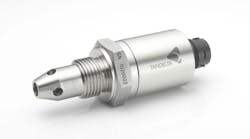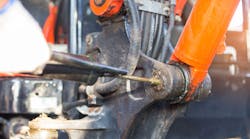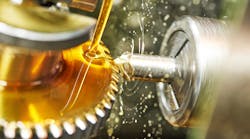The atmosphere surrounding a hydraulic system sometimes is underestimated as a source of dirt and moisture that can infiltrate hydraulic systems—usually through the reservoir breather. The oil level continually rises and falls as cylinders extend and retract, and system cycles occur. As the oil level rises, air pushes out of the reservoir, and as it drops, ambient air is drawn in through the breather.
Thousands of microscopic airborne particles can pass through the breather filter with every machine cycle. These particles can get into the fluid and damage sensitive hydraulic components as they travel through the system.
A similar condition exists with water. Moisture in the air can also enter the reservoir through the breather. The water may remain a vapor as long as the hydraulic fluid in the reservoir is at operating temperature. But when the system is shut down, temperature drops, and water can condense on the internal surfaces of the reservoir. The liquid water is then free to flow into the hydraulic fluid and also promote corrosion of the reservoir walls’ inner surfaces.
Water contamination in the hydraulic fluid may deplete some additives and react with others to form corrosive byproducts. On top of that, it can increase air entrainment potential and lead to hydraulic pump cavitation.
Fortunately, most hydraulic system designers are aware of these potential problems and compensate by using a breather-filter combination to keep large airborne particles out of the reservoir. However, breather filters are not designed to exclude moisture.
Industry has answered by offering breather filters incorporating a desiccant to also dry the air entering the reservoir. These products help reduce the amount of dirt and moisture entering the reservoir, but they don’t eliminate it. Furthermore, they must be replaced periodically, so the cleaner, dryer air comes at the cost of additional maintenance.
Although the variety of the reservoir filtration products available works to minimize the effects of dirt and moisture contamination, other unconventional products are available to provide a more-effective solution. These work by providing a physical barrier between the interior of the reservoir and the surrounding area. At least one solution goes a step further by reducing the amount of oxygen within the reservoir, thereby inhibiting oxidation of the fluid.








